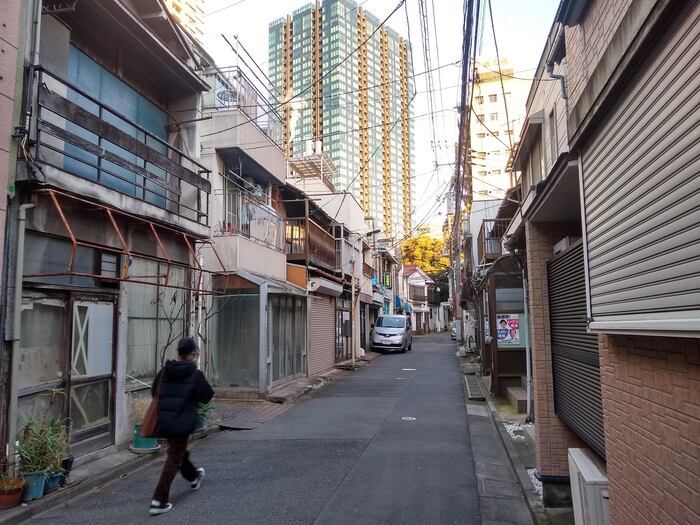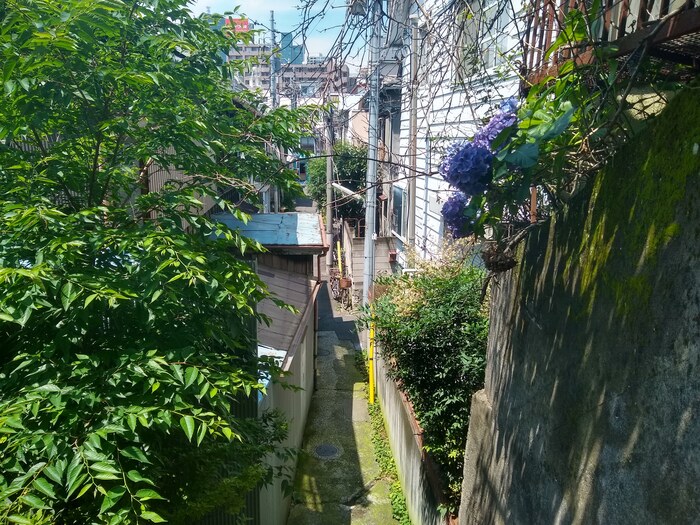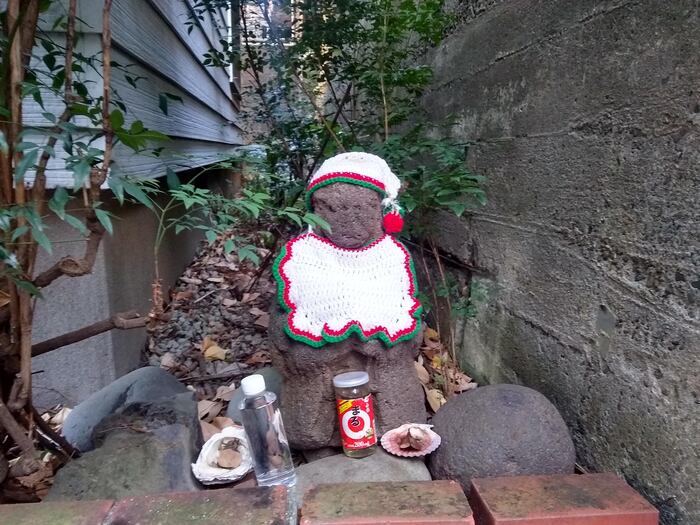Saying Goodbye to Mita Koyamachou
Across the street from Azabu Juban there's a neighborhood called Mita Koyamachou. In the middle of Tokyo it's a few streets of small homes and pre-war buildings where it seems like time has stopped. Early in 2023 demolition begins.

The main street of Koyamachou, with Azabu City Tower in the background.
As of December 2022 I've been living in the same apartment for eleven years, on the same city block as Koyamachou. On my way to the station I take the staircase that runs behind the Koyamayu bathhouse, built around 1920 and in business until 2007, and go through the small shopping street.

Cover art for the single "Mita Koyamachou", illustration by Fujio Mohri. Available from Toy's Club, the Yokohama Tin Toy Museum shop. The illustration is not specifically modelled on Koyamachou.
In 1973, Shigeki Torizuka released the song "Mita Koyamachou", about how it's a neighborhood where it feels like time stopped. Fifty years later, going by the name, his family still runs the cleaners in the middle of the street, which is the only business operating like nothing is amiss.
Looking online, redevelopment of the area has been seriously proposed for about as long as I've been alive. When I moved in, the neighborhood was full of banners reading 街こわし再開発反対 "Against Neighborhood Destroying Redevelopment!", and the website for the group that made the banners was actively updated until around 2017. The surrounding neighborhoods were demolished before I got here, replaced with giant apartment buildings. The next block to the east, a historic insurance-related office and formerly home to my closest postbox, has also been levelled in the past few years, and is currently the site of an extremely high end development, with speculation ongoing about which celebrities will move in before the foundation is even set. There are similar plans for Koyamachou.

A view from the stairs behind the bathhouse, June 2020.
Demolition has already started on some buildings that aren't in Koyamachou, but next to the nearby Azabu City Tower, that had somehow survived the development of the surrounding neighborhood. The next building to go is the Sanuki Club, a hotel made partly to serve as a base to visitors from Kagawa, and a relatively new (70s?) neighboring apartment complex somewhat higher up the hill than Koyamachou proper. The bathhouse and other wood buildings and old structures will go down in February for asbestos removal.
It may take a while until the whole neighborhood is gone, but most remaining businesses have closed and left over the past few months, and except for the cleaners and neighboring laundromat the rest have posted notices of closure or moving. There are exceptions - weird expensive restaurants, newly opened, that fill up reservations six months out and don't have windows - but the life has gone out of the neighborhood. The air has changed to that of a ghost town, full of windows without curtains. It's sad.
Technically, Koyamachou ceased to be the official name of the area in 1967, when it merged with other areas to form Mita Block 1 and was removed from use for formal addresses. But it's managed to keep its identity despite that. If the whole area is levelled the name will still live on at least in the bridge to the west that leads into the main street, which will likely survive even as the street itself disappears.

The Jizou by the stairs by the bathhouse, in Christmas attire.
You can read more about the history of the neighborhood - the name Koyamachou goes back to 1869 - over at Deep Azabu.
Koyamachou will be missed. Ψ